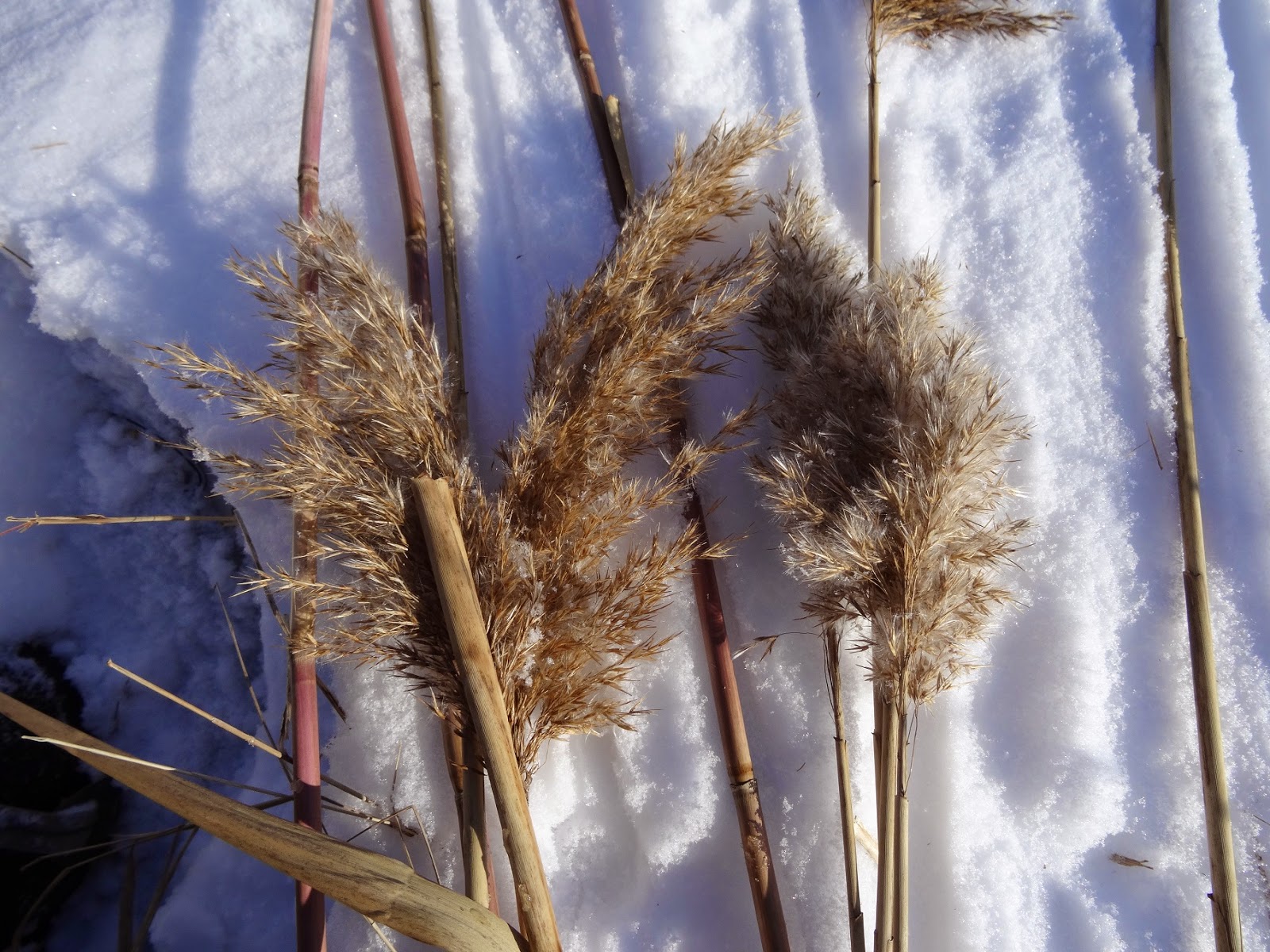Enjoying a day of rest before I return to Long Point for work tomorrow, I thought I'd post a few photos from the past week. Myself and co-worker Andrew Dean have been mapping populations of Phragmites (Phragmites australis) in Big Creek N.W.A., if you enjoy solitude (and being stuck elbow deep in snowdrifts), the middle of the marsh at Big Creek in mid-February is a place you really have to check out!
Equipped with snowshoes and GPS units, Gerry and Andrew pose for a shot at the Causeway viewing platform.
Each day we were seeing a few Northern Harrier (Circus cyaneus) flying low over the marsh. On Wednesday at the western end of Hastings Drive a Harrier landed on the road in front of our vehicle and proceeded to feast on a squirrel.
Bald Eagle (Haliaeetus leucocephalus) flying in a snowstorm.
But for the most part really quiet on the wildlife front. A few small flocks of Snow Buntings (Plectrophenax nivalis) and a pair of Eastern Bluebirds (Sialia sialis) made things interesting. Also a Red-winged Blackbird (Agelaius phoeniceus) frequenting the feeder at the LPBO.
We saw alot of this, well the one on the right. This photo shows a stand of the native Phragmites (subspecies americanus) on the left, with the non-native (subspecies australis) on the right.
While our work is intended to map out the non-native Phragmites, we were seeing populations here and there of the native subspecies. A few identification traits that I find easily recognizable, the native Phragmites has purplish stem internodes (versus yellow-brown), largely in the lower half of the stem, the stems are often thinner, smooth (versus thick, papery), the plume inflorescence is dainty or 'thin' (versus the dense, thick plume of the mature non-native stems), and overall the native subspecies grows patchier (versus some of the populations of the non-native which comprised acres of impenetrable thicket). The Ontario Phragmites Working Group lays out the comparison well here.
Subspecies americanus left, australis right for the following two photos.
Here Andrew walks one of the dykes. Managing Phragmites is by no means an easy task, it's aggressive root system and abundant seed production have allowed it to spread far and wide, not to mention the spread via mowing equipment, fishing boats and ditch dredging equipment, etc.. The challenge is especially great at a spot like Long Point where Species at Risk regulations also come into play. The effective herbicides are known to negatively affect aquatic life (Phragmites tends to grow in or around aquatic/wetland habitats), SAR and their habitat must be considered. At the same time we are faced with the potential that the better part of 750ha of coastal meadow marsh be replaced with a monoculture of non-native Phragmites which would leave the area comparatively dead in terms of species diversity. A conundrum to say the least.
A few other interesting plants that could be identified amongst the snow. A dead stem/inflorescence of Northern Wild Rice (Zizania palustris).
We encountered some impressive swaths of Whorled Loosestrife (Decodon verticillatus). The sea of pink blooms in season would be very impressive.
Just beyond the dunes at the end of Hastings Drive I spotted the seed pods of Swamp Rose Mallow (Hibiscus moscheutos), a Species of Conservation Concern provincially. It's not exactly hard to spot the dark pods on a background of snow.
Snowshoeing across on of the frozen areas we spotted a dark lump on the horizon. Upon closer inspection it was just a stump, but clearly the Coyote (Canis latrans) had the same interest in it as we did.















Very interesting post, Patrick. Although these habitats can appear fairly lifeless this time of year there is always something of interest, as you have described!
ReplyDelete